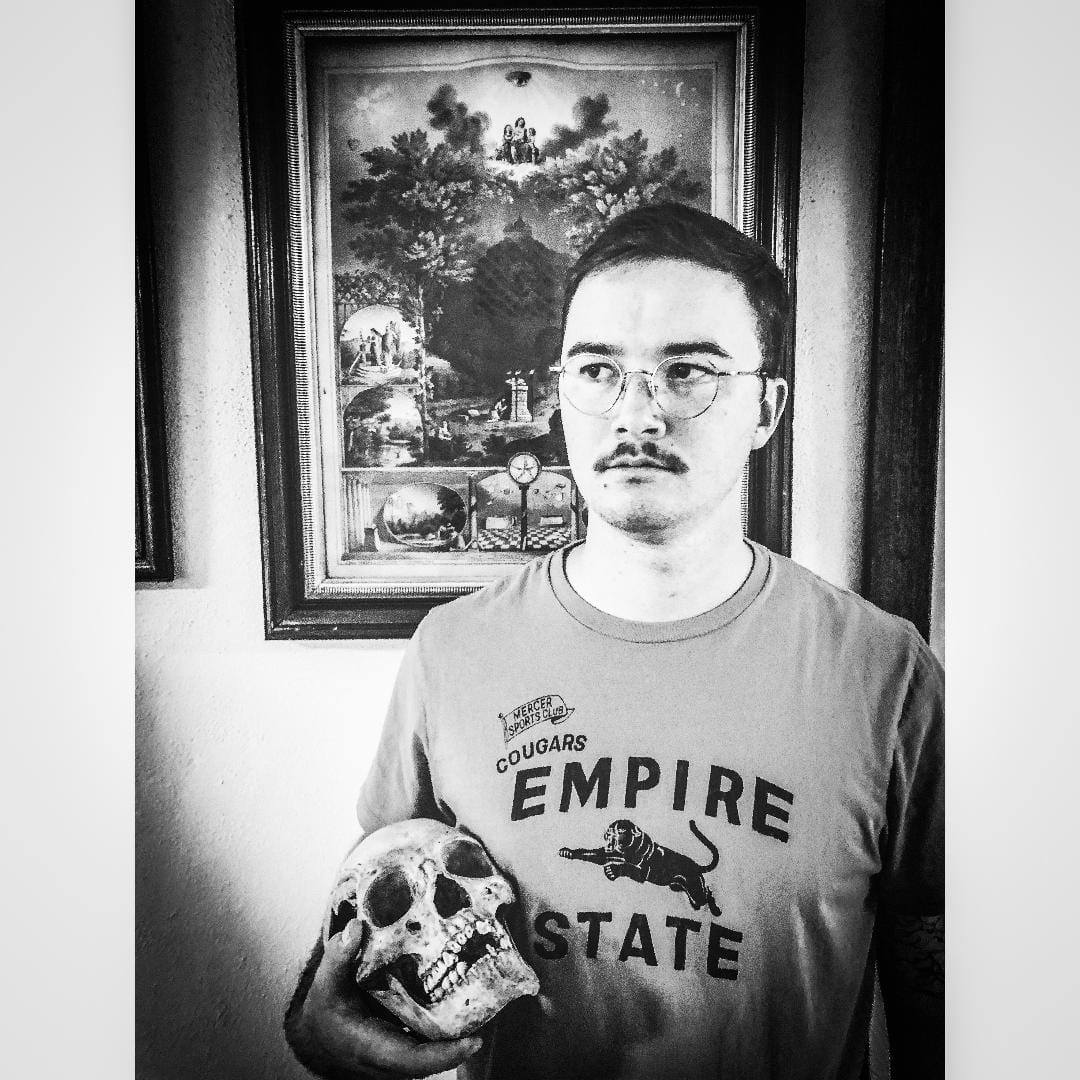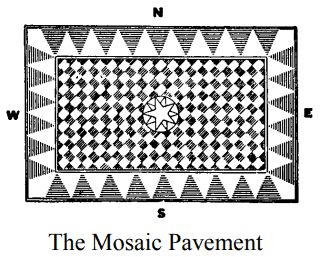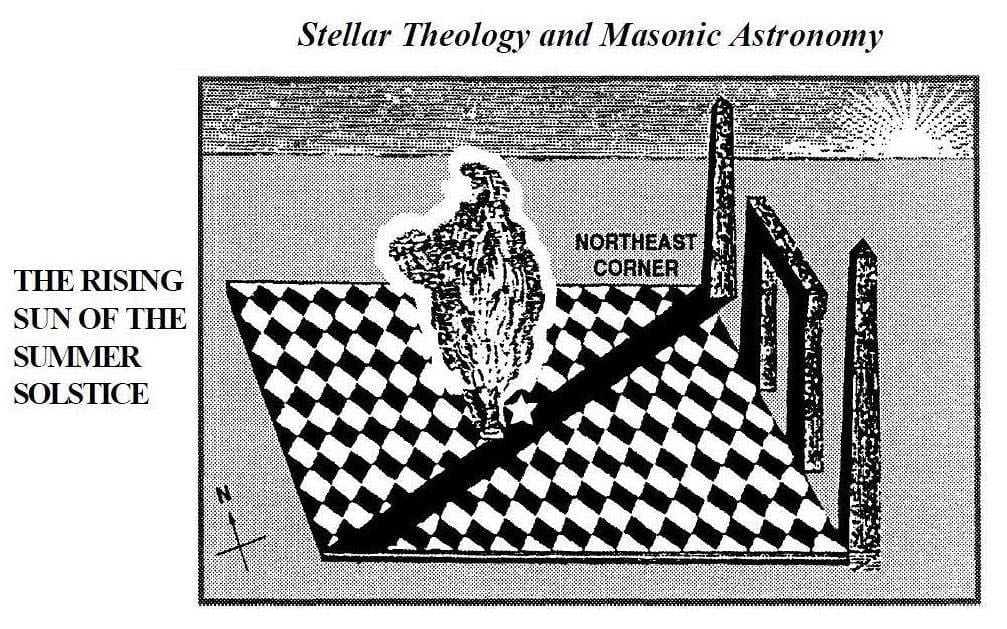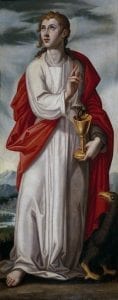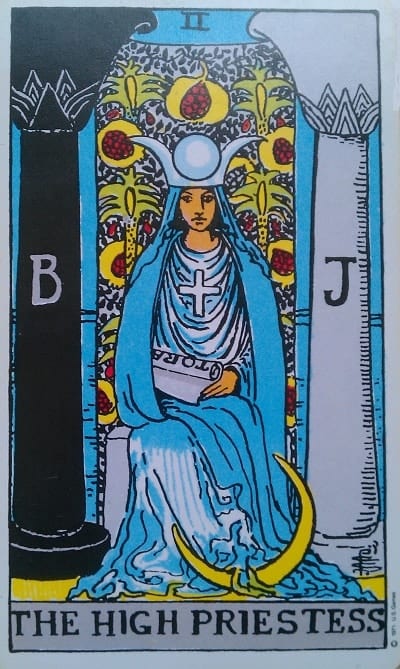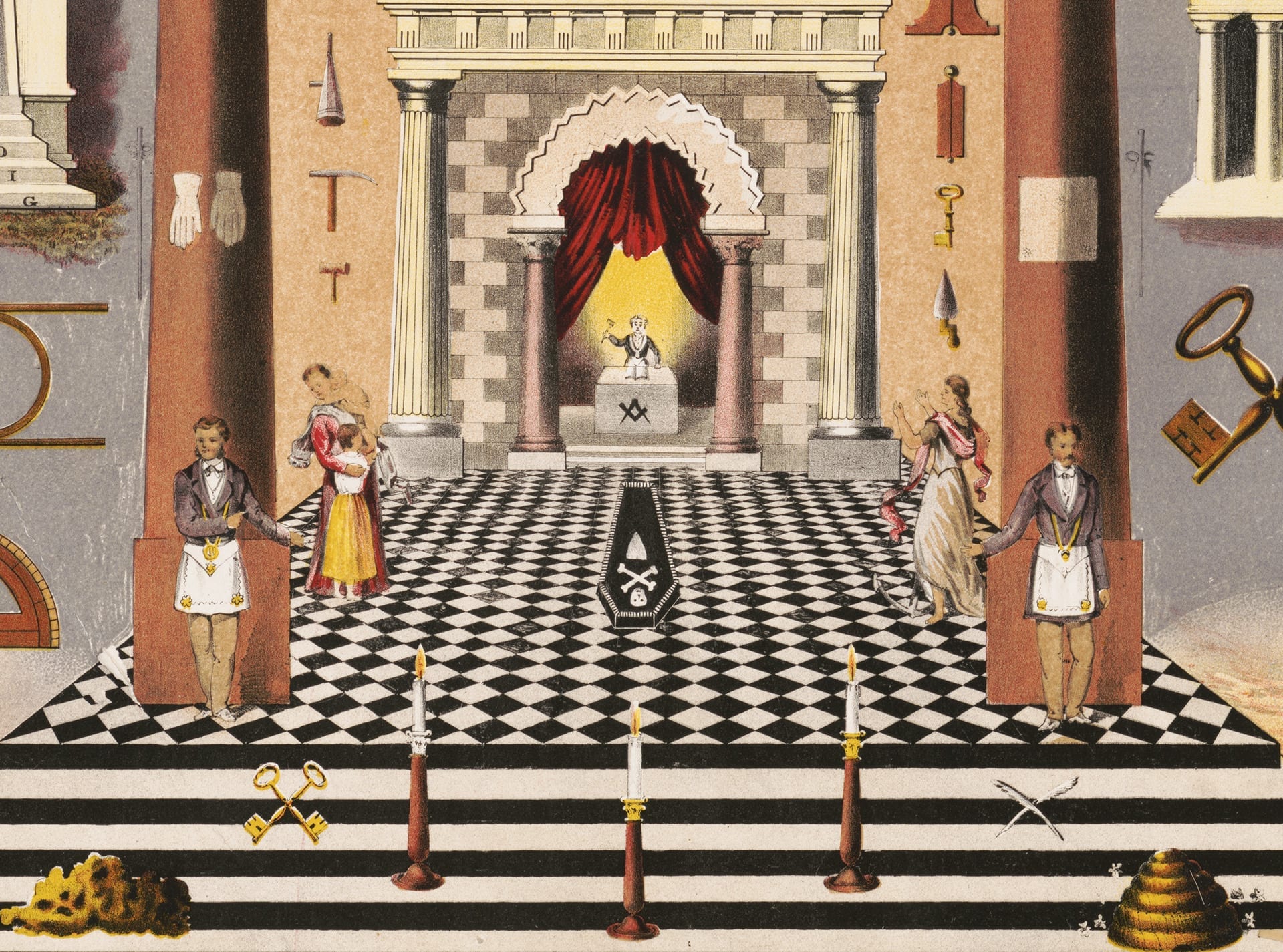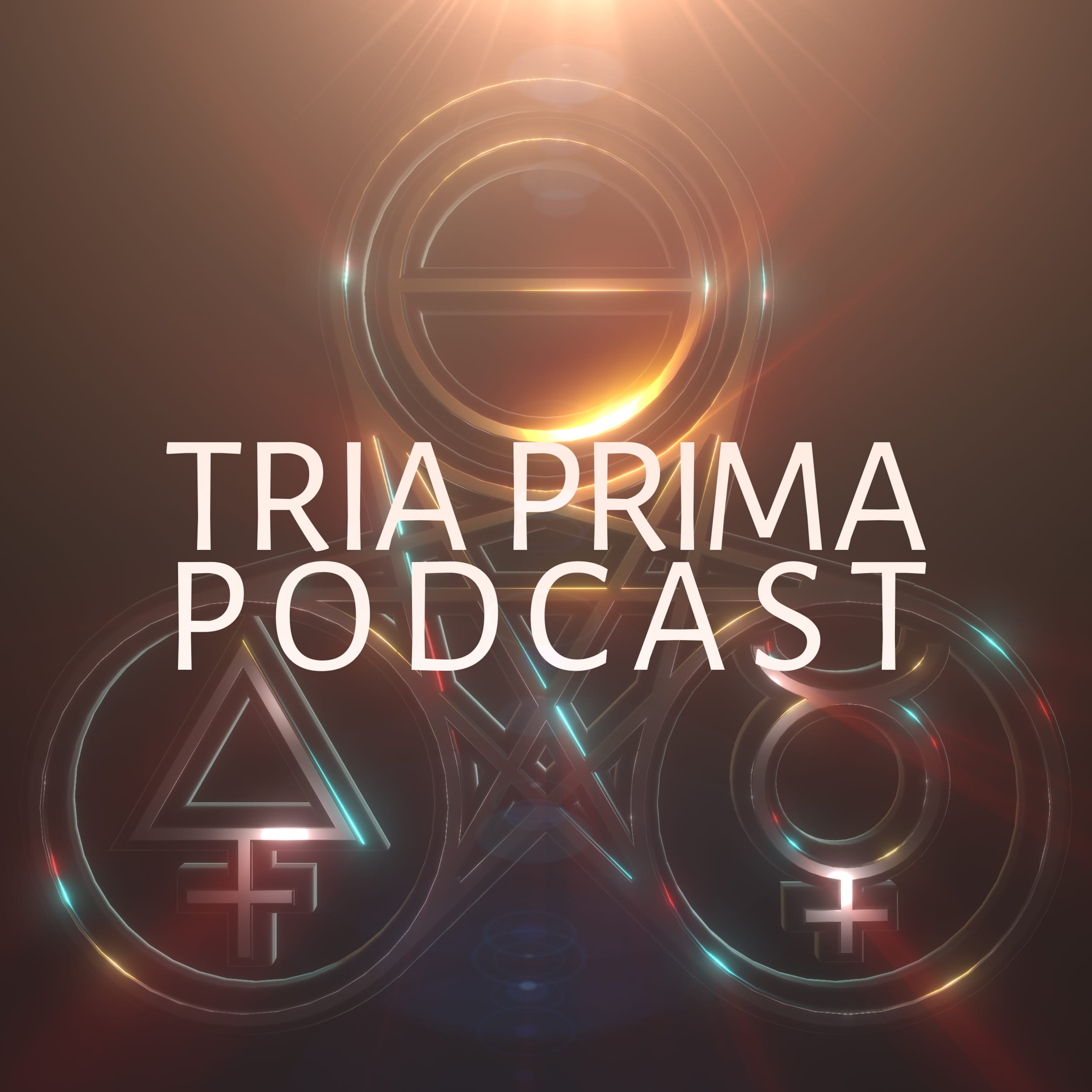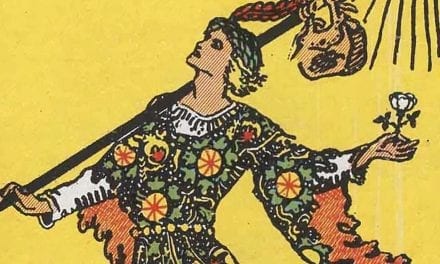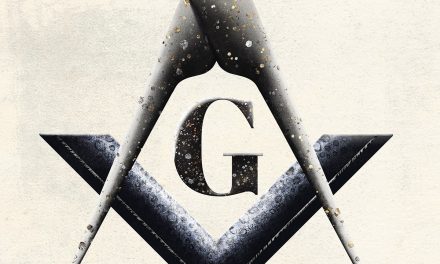The Checkered Pattern on the Floor
Written by Jacob Trayer
An abstract from Jacob William Trayer’s forthcoming book
Discovering The Duad
Within speculative Freemasonry, dualistic symbolism seems to be overshadowed by the ternary, quinary, and septenary examples laid out over the stratification of the Blue-Lodge ritual and allegory. By sheer number of redundancy within our catalogue of symbols and displayed through our allegories, the triad is most ubiquitous. During our constant striving to map the meaning of Masonic symbolism vis-à-vis our own lives, are we to pay closer attention to those numbers that occur more often than others? Is it that dualism within Freemasonry is less valuable than those symbols that come in other, more often utilized numbers? That the rarity of the duad in the Craft ritual has emerged, in the opinion of some masons, as an anomaly of sorts, it becomes even more valuable. Perhaps the most profound of lessons are to be learned within the contemplation of those symbols that are offered little-to-no explanation. This sort of occultation is what many Masons refer to as a clue-bat, or speed bump. Other Masons argue that when an explanation seems too conspicuous, so to speak, there must be more behind that explanatory veil.
In truth, each Brother will find in him a certain level of value that he may place upon particular symbols and/or allegories. The symbols within the degrees of Freemasonry are mostly subjective; up to the interpretation of each Brother. Additionally, each symbol has many interpretive levels, which is the very essence of symbolism. To purport that a symbol has just one interpretive perspective is to turn that symbol into a mere sign. We often find that what resonates with us in Lodge may not be the same source of inspiration for the Brother sitting next to us during our meetings. What I hope to relay to the reader in this short essay, as M∴W∴P∴G∴M∴ of the state of Arizona, Brother Rex Hutchens has been known to say during his lectures on the nature of symbolism, is that “the profundity of a symbol is inversely related to its complexity”. That is to say that those symbols that are more intricate in their design tend towards a longer explanation, and are often philosophically shallow. Conversely, a symbol which has relatively little intricacy in its design, such as the mosaic pavement, seems infinite in contemplative depth.
The mosaic pavement is, in that regard, one of the greatest our noble Craft has to offer its candidates in terms of profound moral and ethical implications. The mosaic pavement, a symbol of simplicity, speaks to the sapient man. Its pattern is the ultimate symbolic sympathy of that duality of life. This duality that so many have spoken of over the vast reaches of time and place is summed up in the duad. Merriam-Webster defines the duad as “a union of two”. We will discover how the union of two unfolds historically, and in our own lives. Unfortunately left out of the furnishings within many Masonic lodges, the mosaic pavement carries with it an elegance that heightens the experience for any initiate who treads upon it.
For the purpose of keeping this essay within due bounds I will be omitting explanations of both the blazing star which is found in the center of the mosaic pavement and the indented tessellation found bordering the same. For reference sake, I will be using the Qabalah, rather than those mystical Hebraic systems spelt with a C or K in place of the Q. From my interpretive vantage point the Hermetic Qabalah, the likes of which was employed for practical use by most magical societies such as the 19th century Hermetic Order of the Golden Dawn, is the most developed with regard to correspondences. As opposed to the Jewish Kabbalah, or Christian Cabala, it is my opinion that the Qabalah is sufficiently syncretized to our current work. Furthermore, I will reference both the Tarot and the Qabalistic Tree of Life; for consistency’s sake I will use the Builders of the Adytum Tarot deck, which is a slight evolutionary step from the well-known Rider-Waite-Smith deck, and the Tree of Life glyph from the same organization. My choice for use of those systems arose out of recognition for their clear and developed correspondences. It is also worth noting that the ritual explanations cited hereafter are accessible to any person and are not considered by any means “Masonic secrets” by which any unlawful communication will, or could take place. It is my opinion that these explanations are valuable to both masons and non-masons alike, and it is hoped that any good man who finds value in them may knock upon the door of Freemasonry if compelled to do so by his own will.
The mosaic pavement is a representation of the Ground Floor of King Solomon’s Temple, with a blazing star in the centre; the indented tessel, that beautiful tessellated border which surrounds it
Practical Application: The Checkered Floor
It is said in most standard Masonic ritual that the mosaic pavement is an “ornament” of the lodge room, together with the blazing star and indented tessel. “The mosaic pavement is a representation of the Ground Floor of King Solomon’s Temple, with a blazing star in the centre; the indented tessel, that beautiful tessellated border which surrounds it.” [Duncan’s Ritual Of Freemasonry, 1976, p. 52]. This checkered pattern is further explained to be a representation of those aspects of good and evil which we encounter throughout our daily lives: “The Mosaic Pavement represents this world, which, though checkered over with good and evil, yet brethren may walk together thereon, and not stumble.” [ibid]. Both Brothers A.E. Waite and Albert Pike believed the reference to the pavement being a representation of that flooring found in King Solomon’s Temple to have no factual basis. Both of these Brothers, along with many others, agree that the importance isn’t to be gleaned from the literal reality of the historical claims, but rather the contemplative import of our checkered floor.
Are there any jewells in your lodge?
The mosaic pavement is one of the oldest symbols in the Masonic lodge. References to it are found in Daniel Parker’s Masonic Tablet of 1822, and the Edinburgh Register House Manuscript of 1696 when it is asked “Are there any jewells in your lodge?” to which is answered “Yes three, Perpend Esler a Square pavement and a broad ovall”. In a compelling argument about the practical application of the mosaic pavement, Brother Robert Hewitt Brown explains the potential for the checkered pattern to aid in the tracing of the solar movement throughout the day.
“Whenever it was considered necessary to have the solstitial lines or the length of the shadow actually marked on the floor, then a certain carefully placed line or row of “mosaic squares” (see illustration) would answer the purpose, and also perfectly conceal the design of the whole arrangement; and this is prob- ably the reason why the priests in their temple architecture adopted that kind of pavement. Of course, the details of the arrangement were modified to suit different places and circumstances.”[Stellar Theology and Masonic Astronomy, Robert Hewitt Brown, p. 82].
The word mosaic finds its origin in late Middle English, from the French mosaïque, based on Latin musi(v)um — “decoration with small square stones.” Further tracing of its origin brings us to the Greek mousa — “a muse.” The idea of a hall of muses — a museum — is microcosmically portrayed in the inlaid stone work which is used ornamentally in many famous works of architecture. These micro-macro sympathies are imperative to our analysis during the current work, and this Hermetic idea will be touched upon throughout. Mosaic may also come from the Hebraic word for those things having relation to Moses. As we know Moses’ tabernacle was that inspiration for King Solomon in laying out the plans for his famous temple. This may be one of only a few realistic interpretive tethers between our ritual explanation and canonical history.
The Esoteric Two
In the Holy Bible, specifically from the gospel of Saint John (19:13), one of the patron saints of Freemasonry, we read “When Pilate, therefore, heard that saying; he brought Jesus forth, and sat down in the judgment-seat in a place that is called the Pavement, but in the Hebrew, Gabbatha.” Gabbatha (Aramaic: גבתא), is said to be that place where Jesus stood on trial before his crucifixion. By Hebrew gematria we arrive at the numerical equivalent 406. 406, by the same process, is equivalent to the full spelling of the Hebrew letter Tav (תו), meaning cross ✝︎, a gematriac allusion to that implement of torture that Jesus ultimately died on after his trial at Gabbatha. The Hebrew word for divided (וּפַרְסִין) also enumerates to 406, and is found in Daniel (5:25): “…Thou art weighed in balances, and found wanting. Thy Kingdom is divided.” Again we find biblical allusions to the idea of man-kinds struggle to maintain balance across the duality of life — exemplified by those white and black stones that make up the mosaic pavement. Lithostrōtos (Greek: λιθόστρωτος), is the Greek equivalent to the Hebrew Gabbatha, which, according to Pliny, was none other than a tessellated pavement. In Walford’s Antiquarian, Volume 10 we read:
“From the Greeks of Asia the art passed to their brethren Tarentum and travelled thence into the Roman State where productions soon rose into high estimation under the altered lithostrota, which consisted of stones or marbles in their colours distributed into various beautiful patterns. According to Pliny the introduction of it amongst this people was in the dictatorship of Sylla, who caused a lithostroton, or tessellated pavement, to be laid in the Temple of Fortune at Præneste. For some years the art of tessellation was confined entirely to this purpose, but as Roman luxury increased and fashion began to suggest new modes of expense it was transferred to other parts of buildings and made to ornament ceilings arches and wainscotes. With this alteration in its application, its name also was changed and it obtained that which it has always since preserved musivæ, musaic, or mosaic work either because the productions were so exquisite as to appear to have been executed by the Muses or because the musea where learned men met together were usually decorated with this ornament. The materials of the art also were in some measure different to what they had hitherto been vitrified substances of various colours and beautiful lustre were frequently made use of in lieu of natural stones and the rich effect was further heightened by expensive ornamentation.” [Edward Walford, 1886, Walford’s Antiquarian, pp. 264-265, Google Books].
It could be said that this process is how one gains that Sophia or Wisdom of which our Craft charges us to be in pursuit. In the Tarot, the second card is the High Priestess, who sits upon a cubical stone. The stone is emblematic of the Earth, alchemically represented by the base element, salt. Readers will note that salt itself is, microscopically, cubic in shape. The reader’s attention is re-directed to the earlier quoted ritual “The mosaic pavement represents this world…” The square, and cubic shapes are also emblematic of truth, one of the principle tenets of Freemasonry. The Square is made use of by speculative Masons to try their work, testing right angles to make sure their work is “true.” This is also precisely the reason why the Devil in key 15 of the Major Arcana sits upon a half-cube, or half truth.
A half-truth is but a lie, the major materialistic allusion of key 15. Directing our attention again to the High Priestess of the tarot, we observe our lady Sophia sitting on her cubical stone between two pillars, white and black, with the Hebrew initials for the letter B (Beth, ב) on the left, and J (Yod, י) on the right.They cube is colored grey, that color in between white and black. Again we see a clear indication of the importance of maintaining balance between the duality faced constantly throughout life. She holds a scroll in her hand with the word Tora written upon it. Tora(h) is the Hebrew for law, and makes up the Old Testament. Upon her chest is a pure white cross, a tie back to our analysis of the Hebrew letter Tav. The Sephirah Chokmah is the first active or masculine principle, most often portrayed with a positive symbol + — the cross. Freemasons will find particular importance in those initials inscribed upon the pillars, and are admonished to study the tarot further for its relevance to our craft.
“This is the greatest Force of all powers…”
-Emerald Tablet of Hermes
Gimel (ג), the Hebrew letter associated with the High Priestess, means “Camel”. The camel was the ancient form of transportation, spoken of frequently in Biblical-era stories as the ship of the sand. The implication here is that of movement, and the reader will do well to remember the Hermetic-Qabalistic schema of emanation — here we find our first active principle. The Monad, when reflecting upon itself, created the duad. The duad, in this way, can be imagined as a continuation of that creative energy pent-up in the monad, and further, is the beginning of the primordial vibration. This vibration, or inherent motion that pervades our reality was spoken of in the Emerald Tablet of Hermes when it says “This is the greatest Force of all powers…”. This is supported by modern day physics. Quantum physicist, Don Lincoln, explains this in an article posted to Nova: “Quantum fields are really a mind-bending way of thinking. Everything—and I mean everything —is just a consequence of many infinitely-large fields vibrating. The entire universe is made of fields playing a vast, subatomic symphony.” [NOVA, The Good Vibrations of Quantum Field Theories, pbs.org]. Physicists acknowledge this vibratory state and the Planck scale, but this motion can be witnessed as well on a macrocosmic scale (i.e. “That which is above, is like that which is below…”). The beginning of the Bible speaks of this reflection of the monad and subsequent vibration between the duad when it says [Genesis 1:2(not surprisingly)] “…Elohim vibrated upon the face of the waters…” The original Hebrew that was replaced by “Spirit” in most modern English translations of the Bible was/is “Elohim.” Elohim itself is a dualistic word for the essence of God, not just for the plurality of its syntax, but also in the regard that it is both masculine and feminine, as to imply that the creative, vibratory force which moved upon the waters was an androgynous-dualistic force. The Feminine plural Eloh is terminated in this case with the masculine Im to form the divine name Elohim.
Rectifying The Philosophic Schism
The commonality between all of these practices, professions, philosophies, and perspectives is that the duad reduces to the monad. The entangled pair of sub-atomic particles, although oscillating in opposition to one anothers position, give the observing scientist a singular idea of its super-position. All of the Sephiroth emanate from Kether. The two Qabalistic pillars of Mercy and Severity are balanced by the middle pillar of Beauty. The mother and father produce offspring comprised of a singular set of DNA information — information passed on from both parents.
“The first principle doth consist in that one substance through which, rather than from whom, is every potentiality of natural marvels developed into the actual. We have said through which because the Absolute which proceedeth out of unity is not compounded neither hath it any vicissitude. Thereunto from the Triad and from the Tetrad is an arcane progression to the Monad for the completion of the Decad because thereby is the regression of number into unity and in like manner the descent unto the Tetrad and the ascent unto the Monad. By this only can the Duad be completed.”[Heinrich Cornelius Agrippa von Nettesheim, Three Books Of Occult Philosophy, IV, p. 11]
Conclusion
What Freemasonry has to offer in regards to this issue is this: that opposites do not necessarily exist separately. Objects and ideas we perceive as opposite are but two peaks of a pendulum-swing — two ends of a spectrum. Take note that the square alone represents truth, not a black square or white. We are taught to “square our actions”. The positive and negative co-equals of our reality are subjectively mapped out through the cognitive process of applying moral and ethical knowledge in our interactions very single day. The children playing in the yard may be quite fun for us to observe one moment, and quite disruptive to us another. However trivial this example seems, it is scaled up and down, throughout our conscious interactions whether we consciously decide or not. When, as Masons, we walked across the checkered pavement on the floor, we necessarily act as the fulcrum by which these “opposing” forces act. The yin and yang both have within them a drop of that other perspective. A book isn’t read without two colors upon the page. We must not exhaust extra energy, beyond what our cable-tow allows, heads down in an effort to hopscotch between those tiles that we imagine are ”good”. Thusly, it becomes apparent that we should walk uprightly, our spine erected by the virtues which are inculcated during those priceless treasures we called the degrees of Freemasonry. When finally the radius of our circumambulation becomes so small that, without the aid of our guide, we traverse that symbol called mosaic pavement, the Craft entrusts that, by our practical application of the Masonic teachings, we will exemplify the square in all of our actions.
Written by Jacob Trayer
Jacob Trayer is a 32° Freemason and Knight Templar from Phoenix, Arizona. Raised at Sy Harrison Lodge #70 in 2013, Jake is currently the charter Senior Deacon of Arizona’s newest observance style lodge – Ascension Lodge #89. Jake has had his work featured in several Masonic periodicals, and has recently stepped into the local lecture circuits. He is involved in the Scottish & York Rites, the Masonic Rosicrucians (SRICF), and has co-chartered the Arizona lodge of the Ordo Hermeticus Mysteriorum. His interest are in the occult sciences, Hermeticism, Rosicrucianism, and the Western Esoteric Tradition in general. He hopes to perpetuate the burgeoning of a new breed of esoterically inclined Masons.

